-
Monday, 13 September 2021 – 5:30pm Sabatini Building, Auditorium and Online platform
Session 1. Ethnocide
Second session: Monday, 20 September 2021 – 5:30pm
TicketsMarta Rodríguez and Jorge Silva. Planas: The Contradictions of Capitalism. A Testimony of Ethnocide
Colombia, 1971, b/w, original version, 16mm transferred to DA, 37’. Spanish premiere of the version restored by the Documentary Cinema Foundation, with the support of Colombia’s Ministry of Culture. (Not available in second session, accessible from September 23 to 29 on the online platform)Paul Leduc. Ethnocide. Notes About the Region of Mezquital
Canada and Mexico, 1977, b/w, original version in Spanish, 16mm transferred to DA, 130'Two striking historical documentaries from New Latin American Cinema and the history of the medium. Both entwine the aesthetic avant-garde with politics in protest film-making that also reformulates documentary language. In Planas: The Contradictions of Capitalism. A Testimony of Ethnocide, Marta Rodríguez and Jorge Silva recount, in an assemblage melding cinéma vérité and archive images, the landowner-backed persecution of the Sikuani community by the Colombian army in the Llanos Orientales (Orinoquía) region. Justified as the elimination of a guerrilla group, the intervention sought to put an end to an indigenous cooperative that avoided the intensive exploitation of the area by estate owners. On the other side, in Ethnocide. Notes About the Region of Mezquital Paul Leduc synthesises structural vision and social commitment as he sketches the cultural extermination of the Otomi community in the Mexican state of Hidalgo via an abecedarium of violence: A for antecedents, B for bourgeois, C for class, D for democracy… Up to 18 chapters that articulate a glossary of exploitation uttered solely by the voices of the Otomi minority, and with a script and research by anthropologist Roger Bartra.
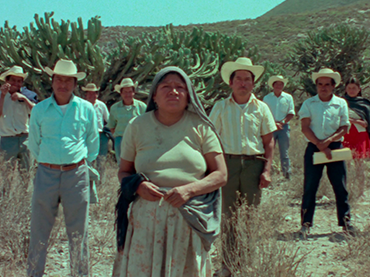
-
Wednesday, 15 September 2021 – 6pm Sabatini Building, Auditorium
Session 2. Rituals. Indigenous Artists
Second session: Wednesday, 22 September 2021 – 6pm
TicketsIsael and Sueli Maxacali. Yãmîy
Brazil, 2012, colour, original version in Maxacali with Spanish subtitles, DA, 15'Tawna. Film From Territory. Tuku
Ecuador, 2021, colour, original version in Quechua with Spanish subtitles, DA, 12'Charles Fairbanks and Saúl Kak. Echoes of the Volcano
Mexico, 2020, colour, original version in Spanish, DA, 18'Francisco Huichaqueo. Kuifi ül. Ancient Sound
Chile, 2020, colour, sound, DA, 10’Francisco Huichaqueo and Leonel Lienlaf. Kuzen. Full Moon Songs
Chile, 2016, colour, original version in Mapudungun, DA, 4’―The first session will be presented by Sara Buraya (Museo Reina Sofía) and Massimiliano (Mao) Mollona (Institute of Radical Imagination), and followed by a talk between artist Francisco Huichaqueo, a participant in this film series and the exhibition We Are Fragments of Light that Prevent Everything Becoming Night, Natalia Arcos (curator of the show), Chema González (Museo Reina Sofía) and Massimiliano (Mao) Mollona (Institute of Radical Imagination).
This collective session features film-makers and contemporary indigenous artists who use film as a key medium to represent indigenous peoples’ cosmovision. They all share the search for an audiovisual language adapted to ritual understood as a paradigm for an indigenous identity that bears a close relation to their community and nature. Isael and Sueli Maxacali, from the Maxacali community of Minas Gerais (Brazil), film a collective theatre in their own village, in which their people metamorphose into yamiys, spirits of the Maxacali cemetery that mutate into different animate and inanimate beings. Tawna. Cine desde territorio (Tawna. Film from Territory) is a collective that develops audiovisual projects with the aim of decolonising gazes and narrations from Ecuador’s Amazon rainforest, thereby proposing that vernacular stories be told and filmed from the place inhabited and defended by the same autochthonous people in a committed exercise of self-representation. In Tuku, some children look for a worm as they hear a tale about the healing powers attributed to these invertebrates. Elsewhere, Saúl Kak, from the indigenous Zoque people, in collaboration with North American film-maker Charles Fairbanks, explores the mass displacement of the Zoque population after the eruption of the Chichonal volcano in Mexico. It also recounts how this same community has sought refuge in a place where Chiapas oral culture shapes their daily life through ever-present loudspeakers located around the whole village, random technology combining monument, totem and village resident. Finally, Mapuche Francisco Huichaqueo calls for the Mapuche community, hounded in Chile, to express itself through dreams, poetry and hallucination. In Kuifi ül. Ancient Sound the ancestral instrument the trutruka characterises the ceremony of Wüñoy tripantu, the Mapuche New Year, while in Kuzen. Full Moon Songs a poem by Mapuche writer and musician Leonel Lienlaf sets the rhythm of time.

-
Friday, 17 September 2021 – 5pm Sabatini Building, Auditorium
Session 3. Weavers. The First Workshop of Indigenous Film
Second session: Thursday, 23 September 2021 – 6pm
TicketsElvira Palafox Herranz. Teat Monteok, The Tale of the God of Lightning
Mexico, 1985–2018, colour, original version in Huave with Spanish subtitles, Super-8 transferred to DA, 19'. Courtesy of the National Institute of Indigenous Peoples (INPI), Mexico.Elvira Palafox Herranz. Angoch Tanomb (An Ancient Wedding)
Mexico, 1985–2018, colour, original version in Huave with Spanish subtitles, Super-8 transferred to DA, 11'. Courtesy of the National Institute of Indigenous Peoples (INPI), Mexico.Teófila Palafox Herranz. Leaw amangoch tinden nop ikoods (The Life of an Ikoots Family)
Mexico, 1987–2018, colour, original version in Huave with Spanish subtitles, Super-8 transferred to DA, 22'. Courtesy of the National Institute of Indigenous Peoples (INPI), Mexico.Three unreleased documentaries in Spain, two of which, The Tale of the God of Lightening and An Ancient Wedding, with postproduction between 2012–2013, are shown publicly for the first time in 2021. The films denote a tipping point in indigenous cinema and entail the self-representation of a group of Huave women after The First Workshop of Indigenous Film, made in San Mateo del Mar (Oaxaca, Mexico) in 1985. The workshop looked to scrap the official policies that had dominated the relationship between the Mexican state and the indigenous subject between 1930 and 1980; policies characterised by the search for a modern mixed-race citizen and by the assimilation of the Indian’s cultural difference. Therefore, a group of film-makers and researchers — Alberto Becerril, Luis Lupone and Carlos Mendoza — following the teachings of Jean Rouch and postmodern anthropology, which questions the authority of the ethnographer and the objectivity of the document, develop a workshop allowing the community to recount their stories and produce their own audiovisual memory. The women chosen, sisters Elvira and Teófila Palafox, were weavers who would regularly use highly complex storied motifs, facilitating their capacity for narration and visual description. Shot in Super-8, the films are regarded as forerunners of video and more contemporary indigenous audiovisual works. The Life of an Ikoots Family reflects daily experience, away from ritual. Teat Monteok, The Tale of the God of Lightning narrates a story of the Huave cosmovision on the origin of their people with a sophisticated montage combining fiction (story) and document (work). Finally, An Ancient Wedding evades folkloric costumbrismo by using a huge temporal jump as a narrative resource.
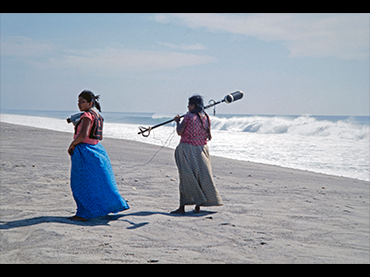
-
Saturday, 18 September 2021 – 12pm Sabatini Building, Auditorium
Session 4. Stories. Children’s Programme
Second session: Saturday, 25 September 2021 – 12pm
TicketsGabriela Badillo. The Origin of the Sun and Moon
Mexico, 2017, colour, original version in Tseltal with Spanish subtitles, DA, 1'20''Jackson Abacatu, Charles Bicalho and Isael Maxacali. Konāgxeka. The Maxakali Flood
Brazil, 2016, colour, original version in Maxacali with Spanish subtitles, DA, 16'Gabriela Badillo. The Origin of the Rainbow
Mexico, 2017, colour, original version in Mazateco with Spanish subtitles, DA, 1'20''Jackson Abacatu, Charles Bicalho and Shawara Maxacali. Mātanāg. The Enchanted Lady
Brazil, 2020, colour, original version in Maxacali with Spanish subtitles, DA, 14'Gabriela Badillo. The Wild Animal that Didn’t Want to Get Dirty
Mexico, 2017, colour, original version in Tepehua with Spanish subtitles, DA, 1'20''Aldana Loiseau. Pacha, We Are Clay. Pacha and Souls
Argentina, 2019, colour, sound, DA, 5’20’’Antonio Coello.Hant Quij Cöipaxi Hac (The Creation of the World)
Mexico, 2019, colour, original version in Seri with Spanish subtitles, DA, 10'―Featuring enlivening participation in both sessions by La Parcería Infancia y Familia, a collective of thought, creation and action in the production of artistic and cultural projects.
― The session on 18 September will be recorded for educational purposes and to disseminate the activity. Those in attendance will be given a consent form for the transfer of image rights, to be signed voluntarily.This session devoted to child and family audiences is made up of short animated films made in collaboration or joint authorship with different indigenous communities from Latin America. The pieces are shot in their original language, and will be brought to life by the cultural association La Parcería Infancia y Familia, which will work alongside artists and poets Lilián Pallares and Charles Olsen on a series of playful-poetic actions to accompany and connect with, through children’s gazes, this journey to see, listen and broaden our own sense of the world towards the roots of the thousand-year cultural reality of indigenous peoples. The common thread of the different short films is the passing-on of the idea of identity and memory through minority languages, and the interpretation of stories from oral tradition about the origin of the world and life. The Origin of the Sun and Moon, The Origin of the Rainbow and The Wild Animal that Didn’t Want to Get Dirty belong to the famed Mexican series 68 voces, 68 corazones (68 Voices, 68 Hearts), which compiles 68 languages from Mexico by way of 68 indigenous stories recorded in their own languages. Konāgxeka. The Maxakali Flood explores the myth of flooding as a punishment for selfishness and human greed, a belief of the Maxacali ethnic group from Minas Gerais (Brazil), with the illustrations made in a workshop by these indigenous people. Mātanāg. The Enchanted Lady is another example of Maxacali sung cinema and narrates the connection between the afterlife and the world of the living through the journey between both kingdoms of the Maxacali protagonist Mātanāg. In Pacha, We Are Clay. Pacha and Souls, Aldana Loiseau uses clay to tell a story about the relationship between life and earth, and finally, The Creation of the World stems from a collaboration between its author, Antonio Coello, and elderly women and girls of the Seri people (a community from the Mexican state of Sonora), leading to an investigation of oral stories, vernacular songs and cave paintings. The result is a beautiful Seri version of the birth of the world.
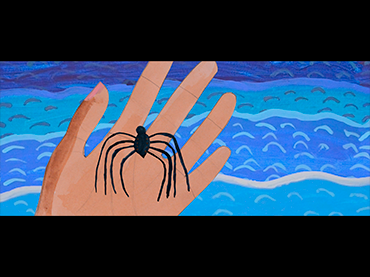
-
Saturday, 18 September 2021 – 6pm Sabatini Building, Auditorium
Session 5. The Spokeswoman
Second session: Saturday, 25 September 2021 – 6pm
TicketsLuciana Kaplan. The Spokeswoman
Mexico, 2020, colour, original version in Spanish, DA, 82'―Presentation and talk with the film crew in the first session.
This session devoted to child and family audiences is made up of short animated films made in collaboration or joint authorship with different indigenous communities from Latin America. The pieces are filmed in their original language and are brought to life by the cultural association La Parcería. The common thread of the different short films is the passing-on of the idea of identity and memory through minority languages, and the interpretation of stories from oral tradition about the origin of the world and life. The Origin of the Sun and Moon, The Origin of the Rainbow and The Wild Animal that Didn’t Want to Get Dirty belong to the famed Mexican series 68 voces, 68 corazones (68 Voices, 68 Hearts), which compiles 68 languages from Mexico by way of 68 indigenous stories recorded in their own languages. Konāgxeka. The Maxakali Flood explores the myth of flooding as a punishment for selfishness and human greed, a belief of the Maxacali ethnic group from Minas Gerais (Brazil), with the illustrations made in a workshop by these indigenous people. Mātanāg. The Enchanted Lady is another example of Maxacali sung cinema and narrates the connection between the afterlife and the world of the living through the journey between both kingdoms of the Maxacali protagonist Mātanāg. In Pacha, We Are Clay. Pacha and Souls, Aldana Loiseau uses clay to tell a story about the relationship between life and earth, and finally, The Creation of the World stems from a collaboration between its author, Antonio Coello, and elderly women and girls of the Seri people (a community from the Mexican state of Sonora), leading to an investigation of oral stories, vernacular songs and cave paintings. The result is a beautiful Seri version of the birth of the world.
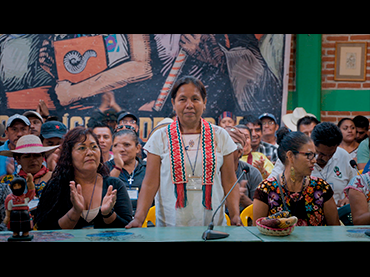

Held on 13 sep 2021
A quote from the fourth Zapatista Manifesto of 1996 lends this audiovisual programme its title. With longing and poetry, the phrase captures the desire for change in the wake of prolonged repression, whereby the lives of indigenous communities in Latin America cast light on a society that is more just, equal, diverse and respectful to nature. Film, the modern device emanating from the industrial revolution, radically transforms through the indigenous gaze and use. Life as ritual, cyclical time, the indistinctness between myth and reality, and the veneration of territory mix with guerrilla resistance and global communication technologies, altering and shaking up ways of imagining and storytelling. This series, therefore, brings together all these aspirations and transformations over five sessions.
But Tomorrow the Light Will Be for Others. Film and Indigenous Lives encompasses a broad chronological arc that spans from 1970 to 2020, from the indiscriminate massacre known in Latin America as ethnocide to the Zapatista delegation’s recent journey from the Chiapas jungle to Europe’s major cities; a journey which seeks to rediscover models of co-existence and good living for a worn-out West. In a synthesis of environmentalism, community organisation, ancestral cosmovision and a recognition of difference, indigenous societies give prominence to a future outside the principles of land extraction and wealth accumulation that have characterised global capitalism across recent centuries.
The series gets under way with the session Ethnocide, which includes historical documentaries by Paul Leduc, on one side, and Marta Rodríguez and Jorge Silva, on the other. With ties to Third Cinema, they show, for the first time, the destruction and mass displacement of the indigenous population under the imperative of modernisation, while reflecting on the most suitable way of zooming in on, via documentary film, a widely under-represented collective. The next two sessions screen films made by the indigenous community, including artists and film-makers, who call for an autochthonous visual tradition and generate their own imagery, which is at variance with the anthropological or ethnographic approaches that have condemned them to being a filmed other. The programme moves on to Stories, a session aimed at child and family audiences and made up of a selection of short animated films on the stories of different indigenous communities on the origin of the world. Finally, it wraps up with the Spanish premiere of the feature-length film La vocera (The Spokeswoman), which centres on the candidacy for the Mexican Presidency by María de Jesús Patricio Martínez, “Marichuy”, a woman from the Nahua indigenous community and a spokesperson for the National Indigenous Congress; a candidacy that exposed a crack in the traditional political system and was viewed as a lesson in democracy by indigenous communities.
Curated by
Chema González, in collaboration with Natalia Arcos and Massimiliano (Mao) Mollona
Organised by
Museo Reina Sofía and the Institute of Radical Imagination (IRI)
Collaboration
Foundation for Arts Initiatives (FfAI) and L’Internationale
Acknowledgements
Instituto Mexicano de Cinematografía (IMCINE) and Instituto Nacional de los Pueblos Indígenas (INPI)
In the framework of

Inside the framework of

Más actividades

Oliver Laxe. HU/هُوَ. Dance as if no one were watching you
Tuesday, 16 December 2025 – 7pm
As a preamble to the opening of the exhibition HU/هُوَ. Dance as if no one were watching you, film-maker Oliver Laxe (Paris, 1982) engages in conversation with the show’s curators, Julia Morandeira and Chema González, touching on the working processes and visual references that articulate this site-specific project for the Museo Reina Sofía. The installation unveils a new programme in Space 1, devoted from this point on to projects by artists and film-makers who conduct investigations into the moving image, sound and other mediums in their exhibition forms.
Oliver Laxe’s film-making is situated in a resilient, cross-border territory, where the material and the political live side by side. In HU/هُوَ. Dance as if no one were watching you, this drift is sculpted into a search for the transcendency that arises between dancing bodies, sacred architectures and landscapes subjected to elemental and cosmological forces. As a result, this conversation seeks to explore the relationship the piece bears to the imagery of ancient monotheisms, the resonance of Persian Sufi literature and the role of abstraction as a resistance to literal meaning, as well as looking to analyse the possibilities of the image and the role of music — made here in collaboration with musician David Letellier, who also works under the pseudonym Kangding Ray — in this project.
These inaugural conversations, part of the main working strands of the Museo’s Public Programmes Area, aim to explore in greater depth the exhibition narratives of the shows organised by the Museo from the perspective of artists, curators and specialists.
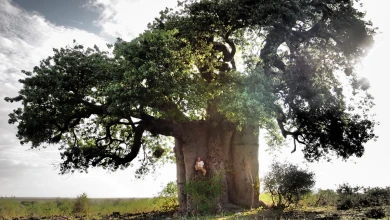
Francisco López and Barbara Ellison
Thursday, 11 December - 8pm
The third session in the series brings together two international reference points in sound art in one evening — two independent performances which converse through their proximity here. Barbara Ellison opens proceedings with a piece centred on the perceptively ambiguous and the ghostly, where voices, sounds and materials become spectral manifestations.
This is followed by Francisco López, an internationally renowned Spanish sound artist, who presents one of his radical immersions in deep listening, with his work an invitation to submerge oneself in sound matter as a transformative experience.
This double session sets forth an encounter between two artists who, from different perspectives, share the same search: to open ears to territories where sound becomes a poetic force and space of resistance.
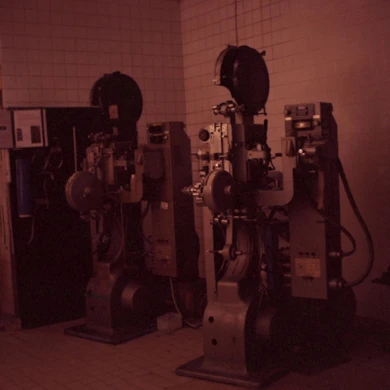
Long Live L’Abo! Celluloid and Activism
4, 5, 6 DIC 2025
L’Abominable is a collective film laboratory founded in La Courneuve (Paris, France) in 1996. It came into being in response to the disappearing infrastructures in artisan film-making and to provide artists and film-makers with a self-managed space from which to produce, develop and screen films in analogue formats such as Super 8, 16mm and 35mm. Anchored in this premise, the community promotes aesthetic and political experimentation in analogue film opposite digital hegemony. Over the years, L’Abominable, better known as L’Abo, has accompanied different generations of film-makers, upholding an international movement of independent film practices.
This third segment is structured in three sessions: a lecture on L’Abo given by Pilar Monsell and Camilo Restrepo; a session of short films in 16mm produced in L’Abo; and the feature-length film Une isle, une nuit, made by the Les Pirates des Lentillères collective.
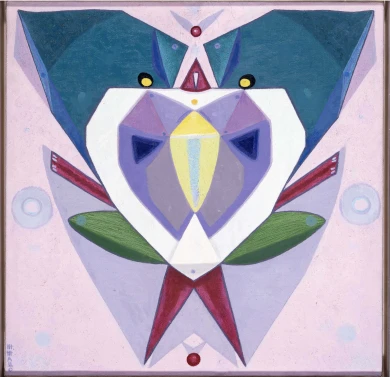
Estrella de Diego Lecture. Holding Your Brain While You Sleep
Wednesday, 3 December 2025 – 7pm
Framed inside the Museo Reina Sofía’s retrospective exhibition devoted to Maruja Mallo, this lecture delivered by Estrella de Diego draws attention to the impact of the artist’s return to Spain after her three-decade exile in Latin America.
Committed to values of progress and renewal in the Second Republic, Mallo was forced into exile to Argentina with the outbreak of the Civil War and would not go back to Spain to settle definitively until 1965 — a return that was, ultimately, a second exile.
Mallo saw out her prolific artistic trajectory with two impactful series: Moradores del vacío (Dwellers of the Void, 1968–1980) and Viajeros del éter (Ether Travelers, 1982), entering her most esoteric period in which she drew inspiration from her “levitational experiences” of crossing the Andes and sailing the Pacific. Her travels, both real and imaginary, became encounters with superhuman dimensions.
In parallel, her public persona gained traction as she became a popular figure and a key representative of the Generation of ‘27 — the other members of which also started returning to Spain.
This lecture is part of the Art and Exile series, which seeks to explore in greater depth one of the defining aspects of Maruja Mallo’s life and work: her experience of exile. An experience which for Mallo was twofold: the time she spent in the Americas and her complex return to Spain.
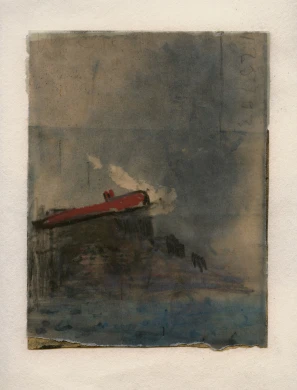
Juan Uslé. That Ship on the Mountain
Tuesday, 25 November 2025 – 7pm
Ángel Calvo Ulloa, curator of the exhibition Juan Uslé. That Ship on the Mountain, engages in conversation with artist Juan Uslé (Santander, 1954) in the Museo’s Auditorium 400 to explore in greater depth the exhibition discourse of this anthological show spanning four decades of Uslé’s artistic career.
The show casts light on the close relationship Uslé’s work bears to his life experiences, establishing connections between different stages and series which could ostensibly seem distant. Framed in this context, the conversation looks to explore the artist’s personal and professional journey: his memories, experiences of New York, his creative process, conception of painting, and ties with photography and film, and the cohesiveness and versatility that characterise his art. Key aspects for a more in-depth understanding of his artistic sphere.
The conversation, moreover, spotlights the preparatory research process that has given rise to this exhibition to grant a better understanding of the curatorial criteria and decisions that have guided its development.
These inaugural conversations, part of the main working strands of the Museo’s Public Programmes Area, aim to explore in greater depth the exhibition narratives of the shows organised by the Museo from the perspective of artists, curators and specialists.



![Miguel Brieva, ilustración de la novela infantil Manuela y los Cakirukos (Reservoir Books, 2022) [izquierda] y Cibeles no conduzcas, 2023 [derecha]. Cortesía del artista](https://recursos.museoreinasofia.es/styles/small_landscape/public/Actividades/ecologias_del_deseo_utopico.jpg.webp)
![Ángel Alonso, Charbon [Carbón], 1964. Museo Reina Sofía](https://recursos.museoreinasofia.es/styles/small_landscape/public/Actividades/perspectivas_ecoambientales.jpg.webp)